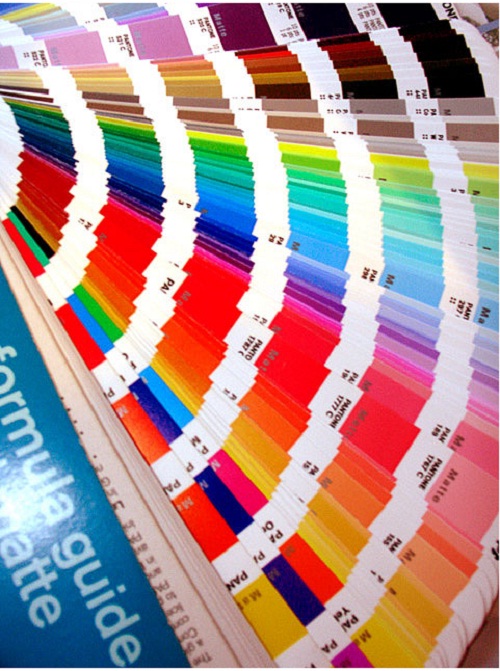
What is spot color printing and what are the techniques of spot color printing?

China printing company has relatively more spot-color printing technology in this aspect of printing and packaging. Next, let’s introduce to you what is spot-color printing? What skills are needed for spot-color printing?
1. Spot color detection At this stage, most printing and packaging companies in China have relatively backward measurement and control methods for spot colors, and most rely on the work experience of their staff to deploy spot color inks. The shortcomings of doing this are that the spot color ink is not precisely formulated, the deployment time is long, and the subjective factors are harmful. Some large and medium-sized printing and packaging companies with overall strength have adopted spot color ink matching system software to manage them. The spot color ink matching system software is a combination of computer, color matching software, spectrophotometer, analytical balance, ink distributing instrument, and ink spreading instrument. The system software is used to collect the main parameters of paper and printing inks often used by enterprises into the database, and the color matching software is used to carry out computer automatic color matching of the spot colors issued by customers, and the spectrophotometer is used to accurately measure its CIELab value, density value, △E, In turn, the digital management of spot color ink matching can be realized. At this stage, there are two brands of spectrophotometers commonly used in the market: American X-Rite and Swiss Gretag. The different spectrophotometers of China printing company to use different calculation methods when accurately measuring the color difference, which will cause different tolerances.
2. The key factors that endanger the color difference of spot colors In the packaging and printing process, there are many key factors that cause color difference in the production of spot color printing inks. The hazards of paper to the color of the ink layer are embodied in three aspects.
(1) Paper whiteness: Paper with different whiteness (or contains a certain color) has a different hazard to the color of the packaging printing ink layer. Therefore, in specific production and manufacturing, paper packaging and printing with the same whiteness should be used as much as possible to reduce the harm of paper whiteness to packaging and printing colors.
(2) Absorption: When the same type of printing ink is packaged and printed on paper with different absorbency under the same conditions, there will be a different packaging printing gloss. Compared with coated paper, the black ink layer will look dull, dull and dull, and the color ink layer will cause drift. The color blended from cyan ink and magenta ink is the most prominent.
(3) Gloss and smoothness: The gloss of printed matter depends on the gloss and smoothness of the paper. The surface layer of printed paper is a semi-gloss surface layer, especially when it is coated paper.
3. The harm of surface treatment to color. The surface treatment methods of packaged goods include film (glossy film, matt film), glazing (cover gloss oil, matt gloss oil, UV varnish), etc. After these surface treatments, the printed products of the China printing company will have different degrees of hue changes and color relative density changes. When covered with gloss film, gloss oil and UV oil, the relative color density increases; when covered with matt film and gloss oil, the relative color density decreases. The chemical changes specifically come from a variety of organic solvents contained in the coating glue, UV primer, and UV oil, which will change the color of the packaging printing ink layer. The hazard of lightening agent to color Lightening agent is a kind of ointment-like colorless and transparent substance, which specifically plays a role in diluting color in spot color packaging and printing. The amount of lightening agent added is different, and the hue is also different, especially when it is blue. The harm of dry retreat density difference The printed matter just printed, the printing ink is still in the wet state, and there is a density difference in the dry state. The phenomenon that the wet color density is greater than the dry color density is called the dry dedensity phenomenon. This is because the ink layer just printed has a certain level of leveling, so the surface reflection is dominated by mirror reflection, which looks bright in color and good gloss. When the ink layer is in a dry state, the surface reflection is dominated by diffuse reflection, and the color is naturally duller than when the packaging is printed. The hazards of system software differences. The process of making color cards with the ink distributing instrument and the ink spreading instrument is a "dry printing" process without water participation, while packaging printing is a "wet printing" process. Wetting fluid has been involved in packaging printing. In offset printing, the printing ink must have emulsification of water-in-oil. The emulsified printing ink changes the distribution of pigment particles in the ink layer, which must cause color difference, and the printed product will look dark and not bright. . In addition, the reliability of the printing ink used in the deployment of spot colors, the thickness of the ink layer, the accuracy of weighing the printing ink, the difference between the old and new degrees of the ink supply area of the printing machine, the speed of the printing machine, and the amount of water during packaging printing are also all It is a different hazard to the chromatic aberration.
Posté Le : 11/11/2021
Posté par : BookPrintingInChina
Ecrit par : BookPrintingChina
Source : https://www.bookprintingchina.com/